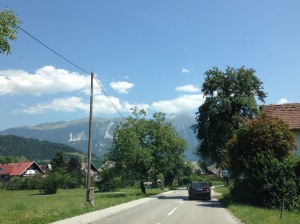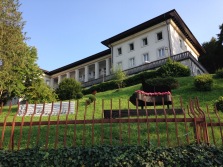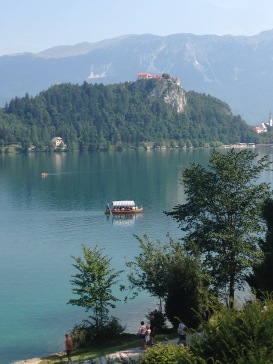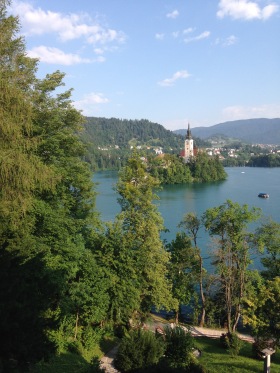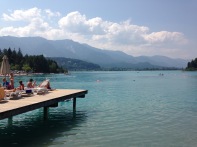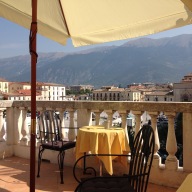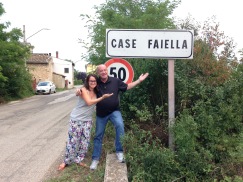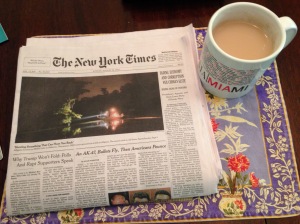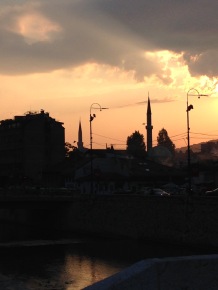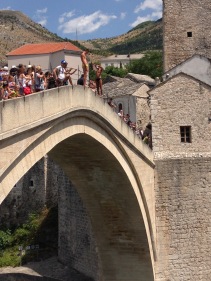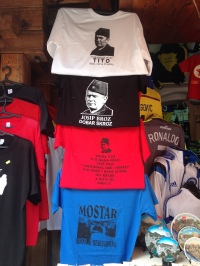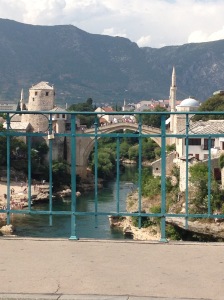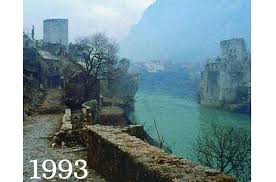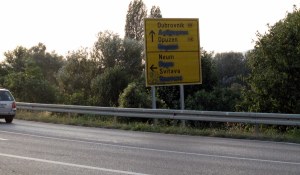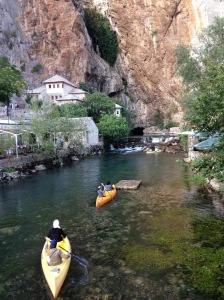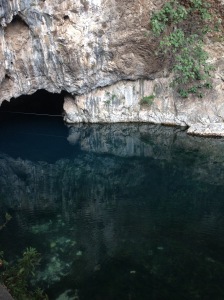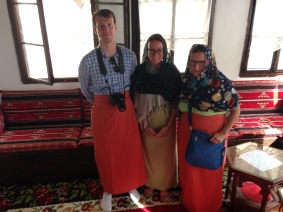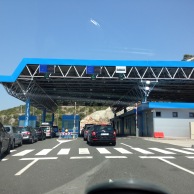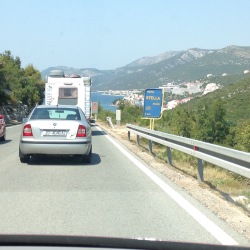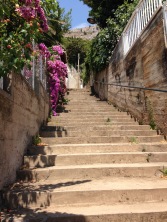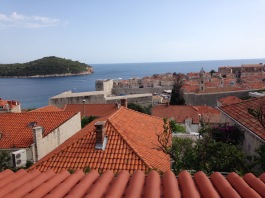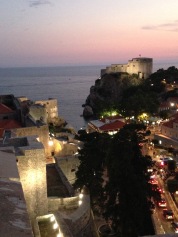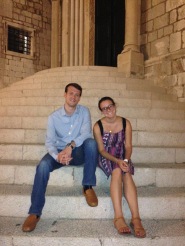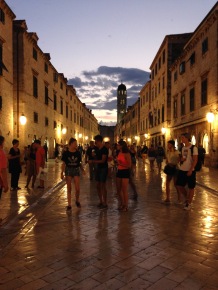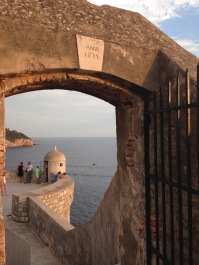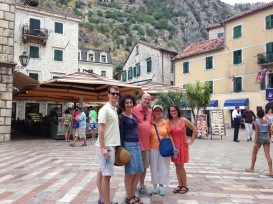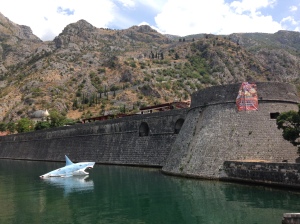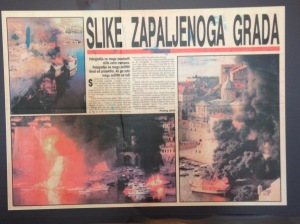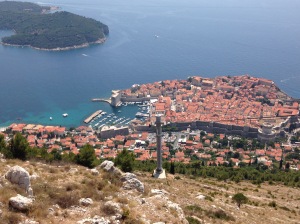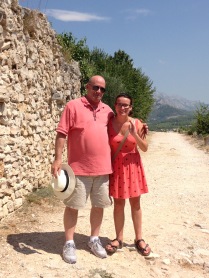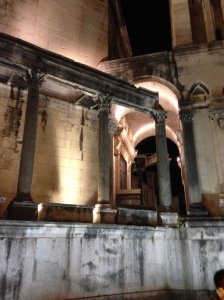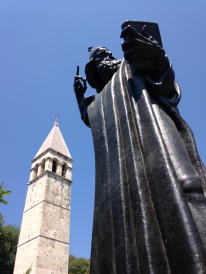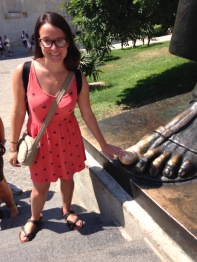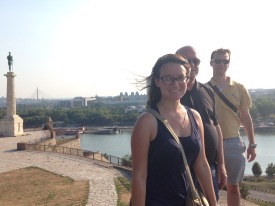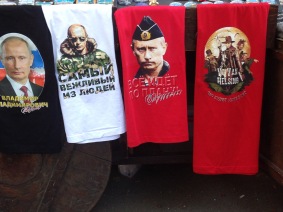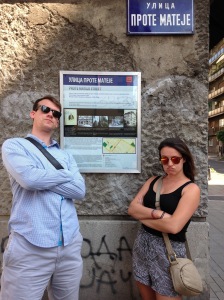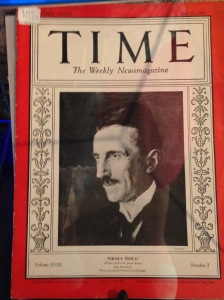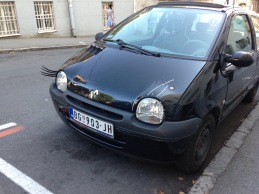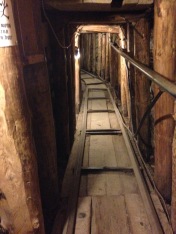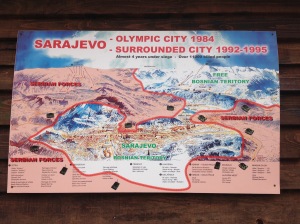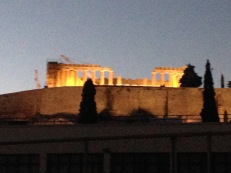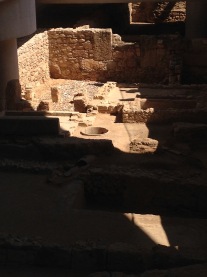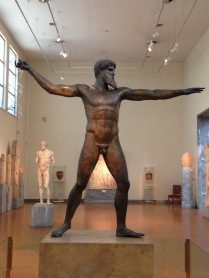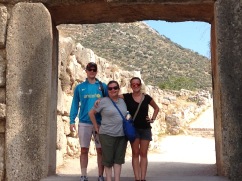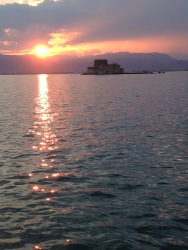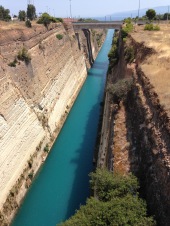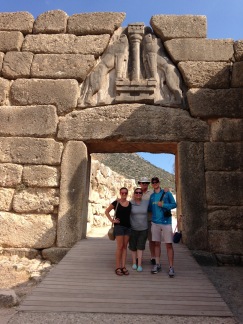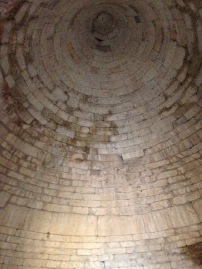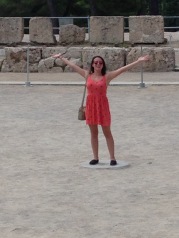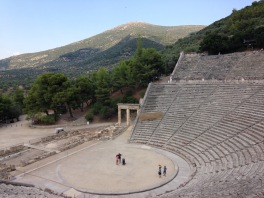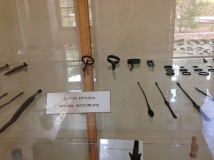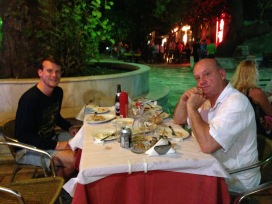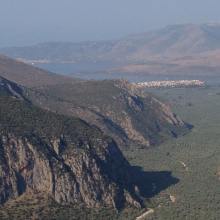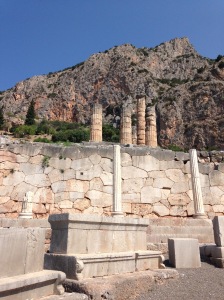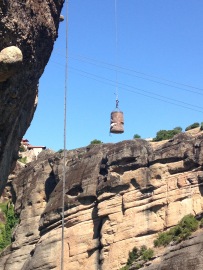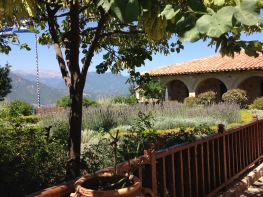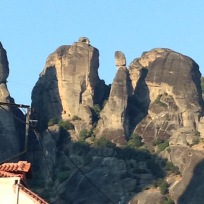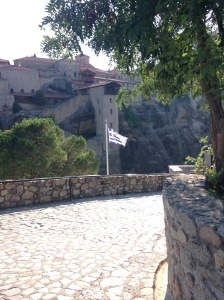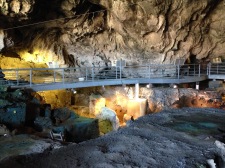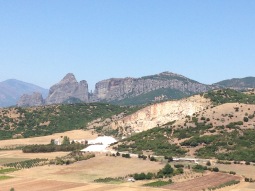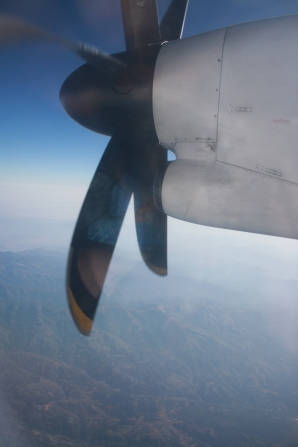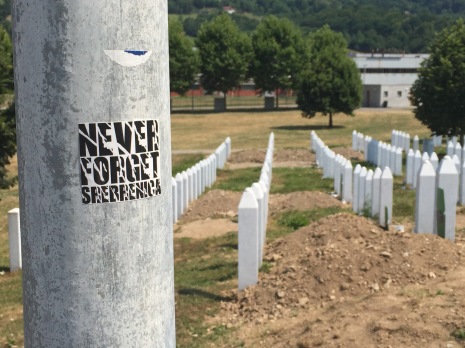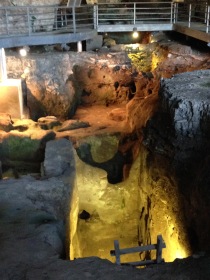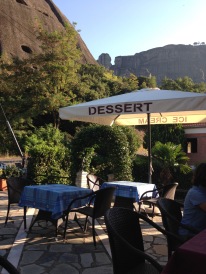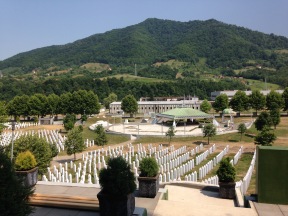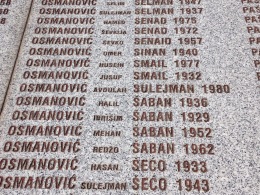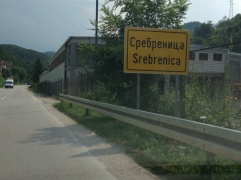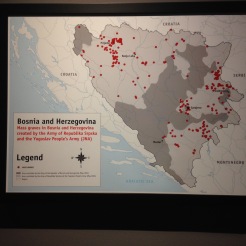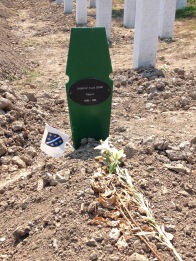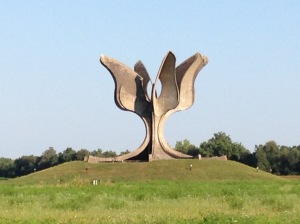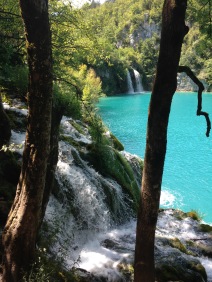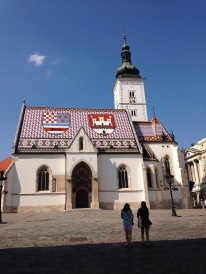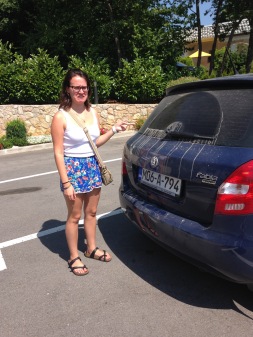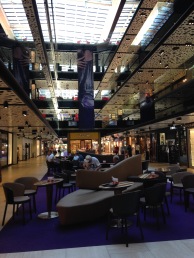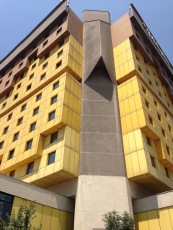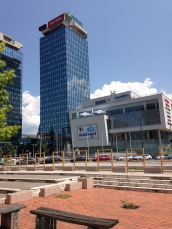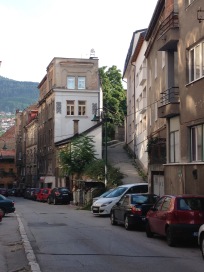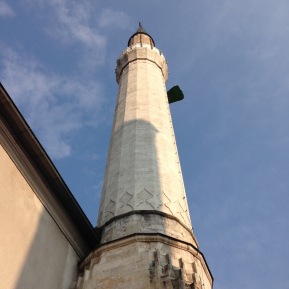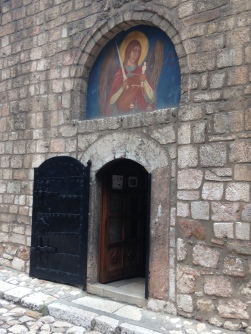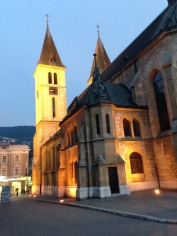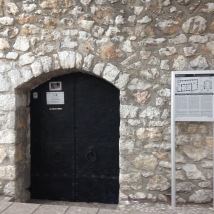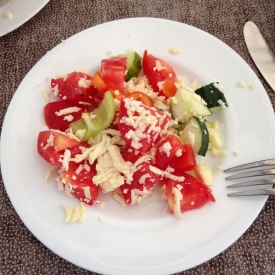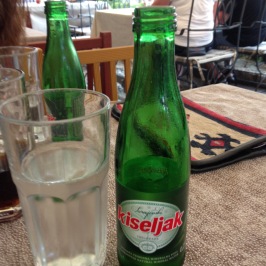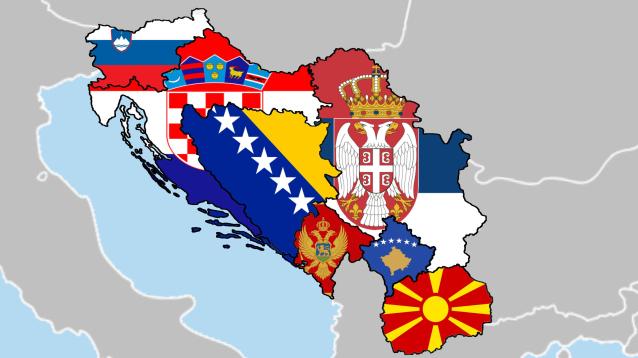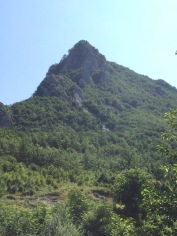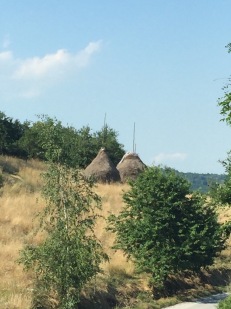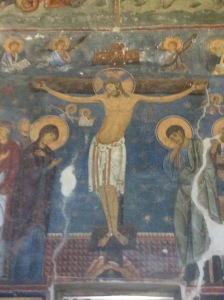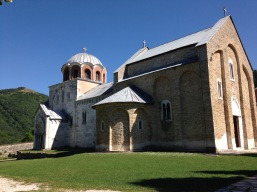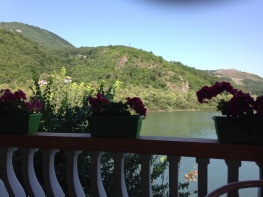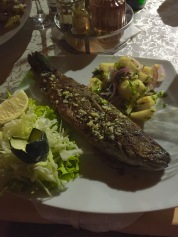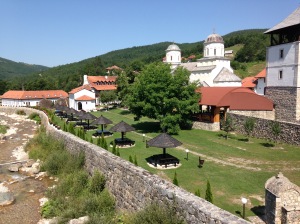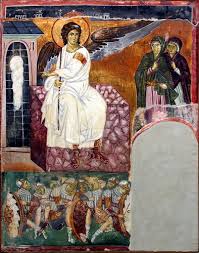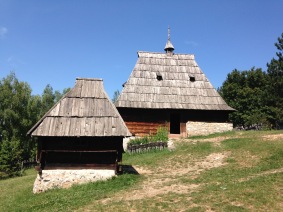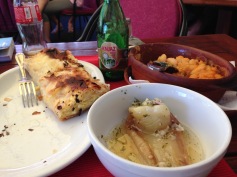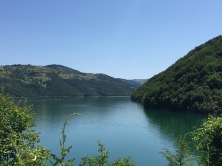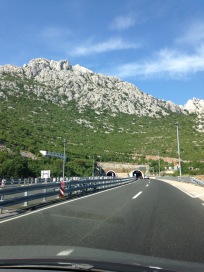 The drive from Split, Croatia to Bled, Slovenia was on the newest motorway in the EU, an engineering marvel which crossed through the dramatic countryside of stark Dinaric Alps, rivers, and deep gorges, over amazing bridges and through lengthy tunnels. It made the 6 hour drive almost effortless and was a welcome relief after weeks of dodging tour buses, and playing “chicken” with on-coming drivers on narrow, winding, mountain roads.
The drive from Split, Croatia to Bled, Slovenia was on the newest motorway in the EU, an engineering marvel which crossed through the dramatic countryside of stark Dinaric Alps, rivers, and deep gorges, over amazing bridges and through lengthy tunnels. It made the 6 hour drive almost effortless and was a welcome relief after weeks of dodging tour buses, and playing “chicken” with on-coming drivers on narrow, winding, mountain roads.
Crossing into Slovenia, it was immediately apparent that we were in a different country. The language is different enough from those spoken in Serbia, BiH, and Croatia that I reverted to speaking English which, thankfully, everyone we encountered spoke. By the architecture we could easily have been in Austria, and whereas the mountains of Croatia are hard-scrabble and craggy, those of Slovenia are lush green and quintessentially alpine. Cows grazed on hillsides and we could almost hear Julie Andrews break forth into song.
Slovenia was the most western of the six former Yugoslav republics, falling under the sphere of influence of the western part of the Roman empire, the Holy Roman empire, and eventually the Hapsburg empire. Its departure from Yugoslavia in 1991 was almost bloodless; neither Milosevic nor Tudjman had a driving interest in expanding their “Lebensraum” into that territory. In 2004 Slovenia became part of both NATO and the EU. During the first World War Slovenia was the scene of some of the bloodiest fighting with 1.7 million soldiers dying in the hotly contested Soca valley/Isonzo front battles between Italians, Slovenes, and Austrians.
I had been to Slovenia before, many years ago during our second trip back to Yugoslavia. My mother’s older brother is buried there (both of my uncles were killed during WWII); we visited his grave as well as the famous caverns of Postojna back then. We didn’t get to either this time, opting instead to leave Slovenia by a northwestern route which took us through a small corner of Austria en route to an afternoon visit to Venice. That latter, “afternoon visit to Venice” = a very bad idea in August, particularly if your hotel reservations are in Ravenna some 3+ hours away…
My main reason for wanting to visit Slovenia was to come to Bled, about which I had heard so much all my life but which, like Plitvice earlier in the trip, I hadn’t seen. Bled did not disappoint and ended up being 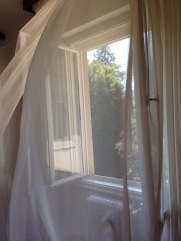 a super high point of the trip. First: the blessed relief of cooler, mountain weather and the luxury of sleeping with the windows open. Next: our hotel — Vila Bled — which was our “big splurge” of the trip. It had been one of Tito’s villas and before him the king of Yugoslavia would stay there. The hotel maintained a “socialist-era luxe” vibe; the second
a super high point of the trip. First: the blessed relief of cooler, mountain weather and the luxury of sleeping with the windows open. Next: our hotel — Vila Bled — which was our “big splurge” of the trip. It had been one of Tito’s villas and before him the king of Yugoslavia would stay there. The hotel maintained a “socialist-era luxe” vibe; the second 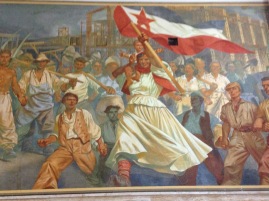 floor ballroom even preserved an epic mural depicting the partisans’ struggles in WWII followed by the proletariat utopia that
floor ballroom even preserved an epic mural depicting the partisans’ struggles in WWII followed by the proletariat utopia that 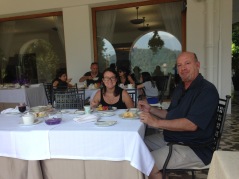 was supposed to be Yugoslavia. The food at Vila Bled was fantastic, served on the outdoor terrace with these views:
was supposed to be Yugoslavia. The food at Vila Bled was fantastic, served on the outdoor terrace with these views:
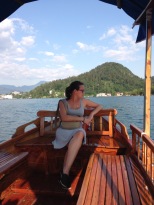 We also had those views from our room, which we reserved as a
We also had those views from our room, which we reserved as a 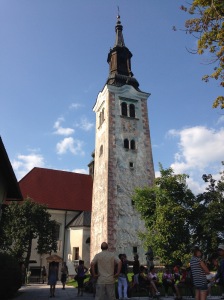 triple and it actually ended up being a large suite with a huge bathroom. We visited the castle and were rowed on a “pletna” out to the church island. The boatman had a relaxed sense of
triple and it actually ended up being a large suite with a huge bathroom. We visited the castle and were rowed on a “pletna” out to the church island. The boatman had a relaxed sense of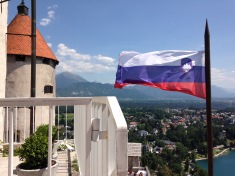 humor (which I’m told is a Slovene characteristic). He shared his humorous take on our current crop of presidential candidates, especially the one with the Slovenian wife… Motorboats are not allowed on the lake and the whole setting was one of quiet serenity. So hard to leave.
humor (which I’m told is a Slovene characteristic). He shared his humorous take on our current crop of presidential candidates, especially the one with the Slovenian wife… Motorboats are not allowed on the lake and the whole setting was one of quiet serenity. So hard to leave.
Our little cut through Austria to get to northeastern Italy was a sweet temptation whetting our appetite for a future trip. We got off the autobahn long enough to drive around the Faaker See, park the car to take a photo or two, say a few words in German, and then move on. “Gruess Gott!’
So on to that “afternoon stop off” in Venice…
Here’s how it could actually work in the middle of an unseasonably hot August if arriving to Venice by car:
a) Park at Piazzale Roma and then take the vaporetto to St. Mark’s Square instead of walking. (By the time we had walked to the square, of course getting lost the requisite number of times, we were hot, tired, and irritable, as well as being really anxious about the 3 hour drive still ahead)
b) Stay in Padova instead of arriving in Ravenna near 1 a.m, or…
c) Come back in October
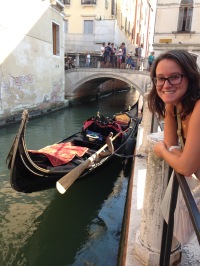 But Venice is still Venice no matter what, and I do hope to return some day and stay more than an afternoon (“hope to return someday” became the theme of almost this entire trip).
But Venice is still Venice no matter what, and I do hope to return some day and stay more than an afternoon (“hope to return someday” became the theme of almost this entire trip).
Our main goal in Ravenna was to see the Byzantine 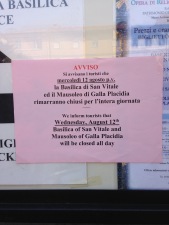 mosaics. Sadly we encountered this sign about the two major sites. Yes, you guessed it, the one day we were in Ravenna was Wednesday, August 12… We did visit the basilica of San
mosaics. Sadly we encountered this sign about the two major sites. Yes, you guessed it, the one day we were in Ravenna was Wednesday, August 12… We did visit the basilica of San
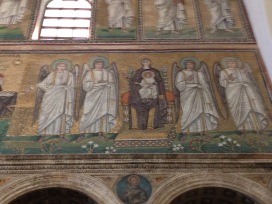 Apollinare Nuovo as well as Dante’s tomb, and simply enjoyed the quiet elegance that is Ravenna (along with my first of many plates of prosciutto
Apollinare Nuovo as well as Dante’s tomb, and simply enjoyed the quiet elegance that is Ravenna (along with my first of many plates of prosciutto 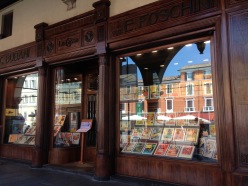 e
e 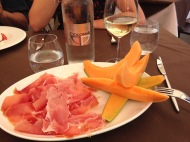 melone). Italy is such a feast, there is hardly a city, town, or village that doesn’t overwhelm with history, food, atmosphere. When Lonely Planet picks me up as one of their travel writers (a girl can dream, right…?) my advice will be: go to the “secondary sites” in the summer and save Venice, Rome, and Florence for the off-season. Because, in truth, there really is no such thing as a “secondary site” in Italy.
melone). Italy is such a feast, there is hardly a city, town, or village that doesn’t overwhelm with history, food, atmosphere. When Lonely Planet picks me up as one of their travel writers (a girl can dream, right…?) my advice will be: go to the “secondary sites” in the summer and save Venice, Rome, and Florence for the off-season. Because, in truth, there really is no such thing as a “secondary site” in Italy.
That latter certainly proved true at our next stop, the Abruzzo region and specifically the town of Sulmona. Definitely not on the “usual” circuit, but definitely worth it. Actually I hesitate to say too much because I don’t want it to be “discovered”! The Abruzzo lies directly east of Rome and includes both mountains and coast. We went there for C to do search for his roots as his father’s family came from a little town called Prezza near Sulmona. Unfortunately the Commune (city hall) was about to close for the Ferragosto holiday, but he met the person in charge of records and will be in touch with him as soon as they re-open. Our B&B was an incredible find — right on the main piazza with part of a medieval aqueduct running through it. The owner was amazingly generous with his time in helping C track down resources and locations pertaining to his ancestry.
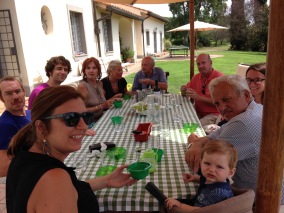 We spent our final three days of this amazing journey in the little town of Sacrofano outside Rome. We went there to visit long-time friends G & P-L and we were fortunate to overlap for a day with their son, wife, and baby visiting from New York, as well as seeing their Rome-based daughter, her husband, and their baby. We also ventured into
We spent our final three days of this amazing journey in the little town of Sacrofano outside Rome. We went there to visit long-time friends G & P-L and we were fortunate to overlap for a day with their son, wife, and baby visiting from New York, as well as seeing their Rome-based daughter, her husband, and their baby. We also ventured into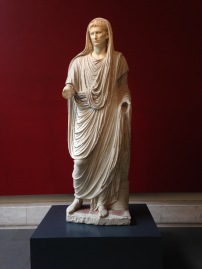 the city on our last day, visiting the Palazzo
the city on our last day, visiting the Palazzo 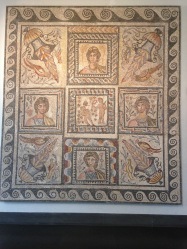 Massimo museum which has a fine collection of Roman statuary as well as a fantastic collection of frescoes and mosaics from ancient villas.
Massimo museum which has a fine collection of Roman statuary as well as a fantastic collection of frescoes and mosaics from ancient villas.
We ended by visiting Piazza Navona and the Pantheon, and throwing our remaining Croatian Kuna coins into the Trevi fountain to ensure a return trip — to all of the countries of this incredible journey: Serbia, Bosnia and Herzegovina, Croatia, Greece, Slovenia, a little sliver of Austria, and Italy.
And now we’re home. In that surrealistically liminal place of “a week ago today I was in Rome” and “tomorrow I go back to the office.” It is way too early to fully grasp the full meaning of this trip, this sabbatical, this incredible opportunity given me by the Lily Foundation. That will unfold in the days to come. I am grateful as well to the people at St. Stephen’s who made this sabbath time possible for me: my amazing staff, incredible volunteers, and awesome Senior Warden. I am also so very grateful to the people I met in Serbia and Bosnia & Herzegovina who are who are working so hard to bring the hope of peace-making and reconciliation to those lands, despite some extremely daunting challenges. You shine a light for the rest of us. Archbishop Desmond Tutu once said, “Do your little bit of good where you are; its those little bits of good put together that overwhelm the world.” I believe this in the very soul of my being — I believe that is why God has put each of us on this earth — and I return from this amazing experience committed to doing whatever my little bit of good is that can help make our community a better place.
This journey ends as it began: a cup of tea and the Sunday New York Times. But in truth, the rest of this journey is only now beginning..

